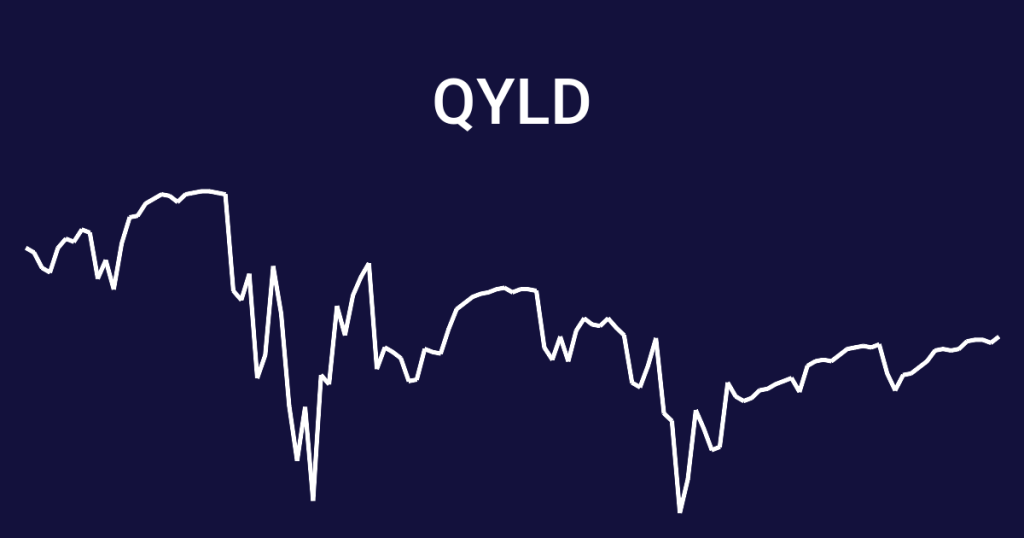Unlocking QYLD ETF: A Comprehensive Guide to Maximizing Your Income with High-Yield ETFs

Imagine generating a steady income stream with investments that not only offer the thrill of the market but also the promise of high returns. Welcome to the world of high-yield ETFs, where your money works as hard as you do. Among these investment vehicles, QYLD stands out, appealing to both seasoned investors and those new to the financial arena.
This comprehensive guide will walk you through the intricacies of QYLD, helping you unlock its full potential and maximize your income. From understanding what drives its high yield to strategic tips on how to capitalize on its performance, we’ll cover everything you need to make informed investment decisions. Get ready to turn your investment strategy into a powerful income-generating machine!
What is QYLD ETF and How Does It Work?
QYLD (Global X NASDAQ 100 Covered Call ETF) is an exchange-traded fund that combines exposure to the NASDAQ-100 Index with a covered call strategy. The fund holds all 100 stocks in the index and sells at-the-money call options against them monthly.
Here’s how it works:
1、Step 1: QYLD buys shares of NASDAQ-100 companies like Apple and Microsoft.
2、Step 2: It sells call options on these holdings, collecting premiums from buyers.
3、Step 3: Premiums generate monthly income, distributed to shareholders as dividends.
This strategy caps upside potential but delivers consistent cash flow, making QYLD popular among income seekers.
The Benefits of Investing in QYLD ETF
QYLD offers unique advantages for investors prioritizing steady income:
High Yield: Historically, QYLD provides an annualized yield of 10–12%, far exceeding traditional dividend stocks.
Reduced Volatility: By selling call options, QYLD partially hedges against market downturns, smoothing returns.
Tech Exposure: Investors gain indirect access to top tech giants like Amazon and Nvidia without direct stock ownership.
Additionally, QYLD’s monthly payouts make it ideal for retirees or those needing predictable cash flow.
Understanding the Risks Associated with QYLD ETF
While attractive, QYLD carries notable risks:
Capped Growth: During bull markets, QYLD underperforms the NASDAQ-100 because call options limit upside gains.
Market Sensitivity: A prolonged tech sector slump could reduce option premiums and share prices simultaneously.
Tax Efficiency: Dividends are taxed as ordinary income, not qualified dividends, potentially increasing tax liability.
Investors must weigh these trade-offs against their financial goals.
How to Incorporate QYLD into Your Investment Strategy
QYLD works best as a supplemental income tool rather than a core holding:
Income Allocation: Allocate 10–20% of a portfolio to QYLD for consistent dividends.
Hedging Tool: Pair QYLD with growth ETFs (e.g., QQQ) to balance income and capital appreciation.
Drip Reinvestment: Use dividend reinvestment plans (DRIPs) to compound returns during sideways markets.
Avoid overexposure—QYLD’s strategy thrives in flat or moderately rising markets but struggles in crashes or rallies.
Comparing QYLD with Other High-Yield ETFs
QYLD competes with similar ETFs, but key differences exist:
XYLD: Tracks the S&P 500 with a lower yield (~9%) but broader sector diversification.
RYLD: Focuses on small-caps (Russell 2000), offering higher volatility and a 12% yield.
JEPQ: JPMorgan’s alternative uses active management, slightly lower fees (0.35%), and better downside protection.
QYLD stands out for its tech focus and simplicity, though JEPQ’s flexibility appeals to tactical investors.
Tax Implications of Investing in QYLD
QYLD’s tax treatment requires careful planning:
Ordinary Income: Dividends are taxed at marginal rates, not the lower qualified dividend rate.
Capital Gains: Rare but possible if underlying stocks are called away, triggering taxable events.
Tax-Advantaged Accounts: Hold QYLD in IRAs or Roth accounts to defer or eliminate tax burdens.
Consult a tax advisor to optimize withholding and reporting strategies.
Tips for Maximizing Your Income with QYLD
Boost returns with these tactics:
Ladder Investments: Buy QYLD shares monthly to average out price fluctuations.
Combine with Growth ETFs: Pair with QQQ or VGT to capture upside during tech rallies.
Monitor Option Activity: Track implied volatility spikes—higher premiums enhance yield.
Reinvest dividends during market dips to lower your cost basis over time.
Real-Life Case Studies: Success Stories with QYLD
Retiree Portfolio: A 65-year-old investor allocated 15% to QYLD, generating $1,200/month to cover living expenses.
Hedging Strategy: A tech-heavy portfolio used QYLD to offset 2024’s market correction, reducing overall losses by 8%.
DRIP Growth: Reinvesting dividends from 2022–2024 compounded returns by 23%, despite flat NASDAQ performance.
These examples highlight QYLD’s role in diverse strategies but emphasize the need for disciplined risk management.
Conclusion: Is QYLD Right for You?
QYLD suits investors seeking high income with moderate risk tolerance. It’s ideal for:
1. Retirees needing reliable cash flow.
2. Conservative investors hedging against volatility.
3. Tech enthusiasts wanting indirect sector exposure.
However, growth-focused or tax-sensitive investors might prefer alternatives like JEPQ or growth ETFs. Always align QYLD with your goals, timeline, and risk appetite.